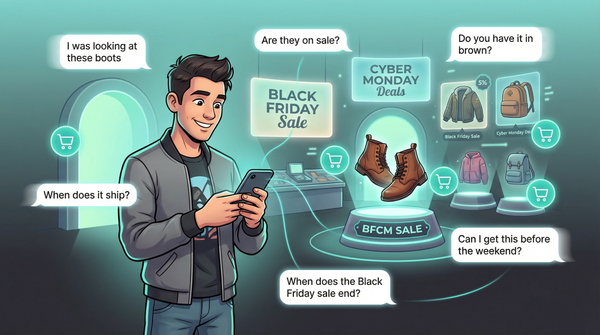From Basics to Bold: The DTC Rebrands Powering a Comeback

Just last week, Outdoor Voices founder Ty Haney hopped on Instagram Live to announce her return—and she didn’t come back quietly. Once known for its neon color-blocked workout sets, the brand’s latest drop swaps spandex for polished A-line dresses, crisp cotton button-ups, and cashmere cardigans designed to layer over sports bras (BoF, Inc.)
“I’m really expanding this recreational style beyond what you wear to sweat in,” Haney told fans, framing the shift as a 180° pivot to meet today’s tastes (BoF).
Ty Haney is back!
— Drew Fallon (@drewfallon12) August 5, 2025
Outdoor Voices relaunched today with a new collection
After raising 7 rounds of venture capital and achieving a $110m valuation, Outdoor Voices was abruptly acquired by Consortium Brands
Consortium Brands is an interesting platform - helmed by veterans of… pic.twitter.com/GaM0JvYqVZ
(Source, X)
Outdoor Voices isn’t alone. Everlane, Rothy’s, and other DTC 1.0 darlings are overhauling logos, product lines, and leadership teams to shed their 2010s playbook and speak to Gen Z.
This rebrand wave in 2025 signals a broader strategy shift—brands that once rode the novelty of DTC are now fighting for relevance in a crowded, faster-moving market.
Why These Rebrands Are Happening Now
Three main pressures are driving this shift:
- Plateauing growth – Everlane’s revenue dipped 1% last year to $198M, while Quince—one of its TikTok-era competitors—has more than doubled that number (BoF).
- Aging customer bases – Outdoor Voices was once peak “millennial-coded” with its muted palettes and sans-serif logos (Washington Post). The core audience is now older, while Gen Z is looking elsewhere.
- Survival mode – Outdoor Voices filed for bankruptcy in 2023 before a private equity rescue (BoF). Rothy’s also saw its once-viral washable flats fall out of favor (BoF).
As Emily Heyward of Red Antler put it:
“You have to reach out to new people with new messages and new value propositions… How to do that while still staying true to the essence of the brand is very hard” (BoF).
Balancing Original DNA with a New Direction
The challenge for founders and new CEOs is simple: refresh without alienating loyalists.
- Outdoor Voices – Haney reassembled the original creative team, revived the “Doing Things” tagline (this time bedazzled in rhinestones), and added lifestyle pieces like wrap skirts alongside technical apparel. The logo also got a retro script update (Washington Post).
- Everlane – Under former CEO Andrea O’Donnell, the brand shifted from “$30 t-shirts” to seasonal collections with more style credibility, while maintaining its ethical positioning. New CEO Alfred Chang is aiming for “Clean Luxury” (Retail Dive) and has brought in a new design and merchandising team.
- Rothy’s – CEO Jenny Ming expanded the line from ballet flats to Mary Janes, chunky loafers, and sneaker clogs. The positioning is now fashion-first, planet-friendly second, driving a 17% sales bump in 2024 and 27% YoY growth in Q1 2025 (BoF).
The 2025 DTC Rebrand Playbook in Action
Outdoor Voices: Turning Nostalgia into a Growth Strategy
- Wiped social feeds before relaunch
- Rolled out hybrid lifestyle/activewear pieces
- Leveraged Haney’s personal community and Web3 platform TYB for launch distribution
- Early buzz: “We’re back, baby!” reel earned 22K+ likes in hours (The Everygirl)
Everlane: From “Radical Transparency” to “Clean Luxury”
- First brand campaign in years, reframing as aspirational yet accessible
- Considering selective wholesale after years of DTC-only distribution
- $25M new funding from L Catterton to fuel the pivot (BoF)
Rothy’s: Fashion-First Resurgence
- Doubled earned media value on TikTok from Mar 2024–Apr 2025
- Influencer-led product drops driving sellouts
- Maintains sustainable credentials while tapping into trend cycles
Early Wins and Ongoing Risks
What’s working:
- Rothy’s growth metrics suggest the right balance of trend and core mission.
- OV’s nostalgia-driven hype cycle re-engaged lapsed customers.
- Everlane’s capital raise shows investor confidence in a pivot.
The risk:
A shiny new brand face won’t fix unit economics, supply chain issues, or customer churn.
As Michael Prendergast put it:
"At the end of the day, it all comes back to great products… that gets very lost when brands focus only on marketing" (BoF).
Operators also need to manage brand equity risk—veer too far and you lose loyalists, move too little and you stay irrelevant. And Gen Z’s radar for inauthenticity is fast: a rebrand that feels like a desperate cash grab will backfire.
The Operator Takeaway
DTC 1.0 isn’t dead—it’s evolving. The brands pulling it off aren’t just swapping logos; they’re:
- Updating product strategy to meet current trends
- Expanding distribution beyond DTC-only channels
- Using founders or seasoned operators to bridge old and new audiences
For Shopify-based operators, the lesson is clear: rebranding should be part of a long-game e-commerce strategy—but only if it’s backed by product and experience upgrades your customers will notice.
As Ty Haney might put it, it’s about “Doing New Things” while staying true to “Doing Things.”
Subscribe for weekly DTC insights.




